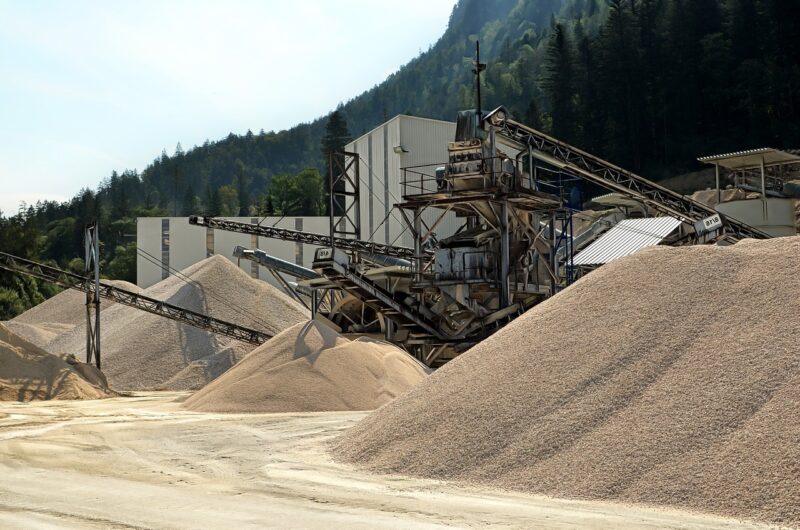How Sand Is Extracted and Refined for Use in Industry and Construction
November 14, 2024

Sand is an essential raw material used in various industries, from construction and manufacturing to technology and recreation. But how is sand extracted, and what processes are involved in refining it for its many uses? This article delves into the extraction and refinement of sand, shedding light on its importance in our daily lives and the challenges faced by the industry.
1. The Importance of Sand in Industry and Construction
Sand serves numerous purposes, making it a fundamental component of many products and structures. Here are just a few of its critical uses:
- Construction Materials: Sand is a key ingredient in concrete, mortar, and asphalt. Its texture and composition contribute to the durability and strength of these materials, essential for building infrastructure like roads, bridges, and skyscrapers.
- Glass Production: Silica sand, which is high in silicon dioxide, is used to manufacture glass products, from windows to bottles, thanks to its purity and melting point characteristics.
- Water Filtration: Sand is used in water treatment plants to filter impurities, ensuring clean and safe drinking water for communities.
- Recreational Uses: Beaches and playgrounds use sand for aesthetic appeal and utility, providing a safe and enjoyable environment for activities.
Understanding the extraction process is crucial depending on these varied applications.
2. Methods of Sand Extraction
The extraction of sand involves several methods, depending on the geographical location and intended use. Here are the primary extraction techniques:
2.1. Open-Pit Mining
Open-pit mining is the most common method where sand deposits are located near the surface. In this technique, large excavators and bulldozers remove the topsoil and extract the sand directly from the earth, usually in areas near rivers or beaches. An advantage of this method is its efficiency; large quantities can be extracted with machines working continuously.
2.2. Dredging
Dredging is employed when sand is extracted from underwater sources like rivers, lakes, or ocean floors. Specialized dredging equipment is submerged to suck up sand from the bottom. This method is effective for obtaining high-quality silica sand, which is often used for glass production and other high-demand applications.
2.3. Hydraulic Mining
Hydraulic mining utilizes a high-pressure water jet to dislodge sand from its natural deposits. The mixture of water and sand is then captured and processed. This method is particularly useful in areas where the sand is mixed with clay or silt, facilitating extraction with less environmental disruption.
3. Environmental Impacts of Sand Extraction
While sand extraction is crucial for economic development, it poses significant environmental challenges.
- Habitat Disruption: Sand mining operations can disrupt local ecosystems, leading to habitat loss for wildlife and plants. Natural landscapes, such as rivers and beaches, are altered, affecting biodiversity.
- Water Pollution: Dredging and other methods can introduce pollutants into local waterways, harming aquatic life and jeopardizing drinking water sources for nearby communities.
- Erosion: Excessive sand extraction can lead to increased erosion in coastal and riverbank areas, contributing to landscape changes and potential flooding risks during storms.
Efforts are being made to mitigate these impacts through sustainable practices and regulations.
4. Refinement Processes of Extracted Sand
Once sand is extracted, it often requires refining to meet specific industry standards. This involves several steps:
4.1. Washing
Washing removes impurities like clay, silt, and organic matter. The sand is typically run through water jets that dislodge contaminants, and the cleaned sand is then settled in large ponds or containers for further processing.
4.2. Drying
After washing, the sand is dried to eliminate moisture. Techniques may include using hot air systems or rotary dryers, especially for silica sand, ensuring that it meets quality standards for use in various applications.
4.3. Sorting and Grading
Refined sand is sorted by size and texture, as different industries have specific requirements. This process ensures the sand meets the desired standards – for example, coarse sand for concrete and fine sand for glass production.
5. Conclusion
Sand is a critical resource that supports infrastructure development and industrial production. Understanding its extraction and refinement highlights both its value and the responsibilities of the industry to ensure effective and sustainable practices. As demand for sand continues to grow worldwide, it becomes increasingly essential to balance economic needs with environmental stewardship, ensuring that this vital resource remains available for future generations.
Make informed decisions about sand extraction to safeguard the environment, and recognize its role in our everyday lives. By doing so, we contribute to not just construction but also conservation efforts, ensuring a sustainable future for sand resources.








